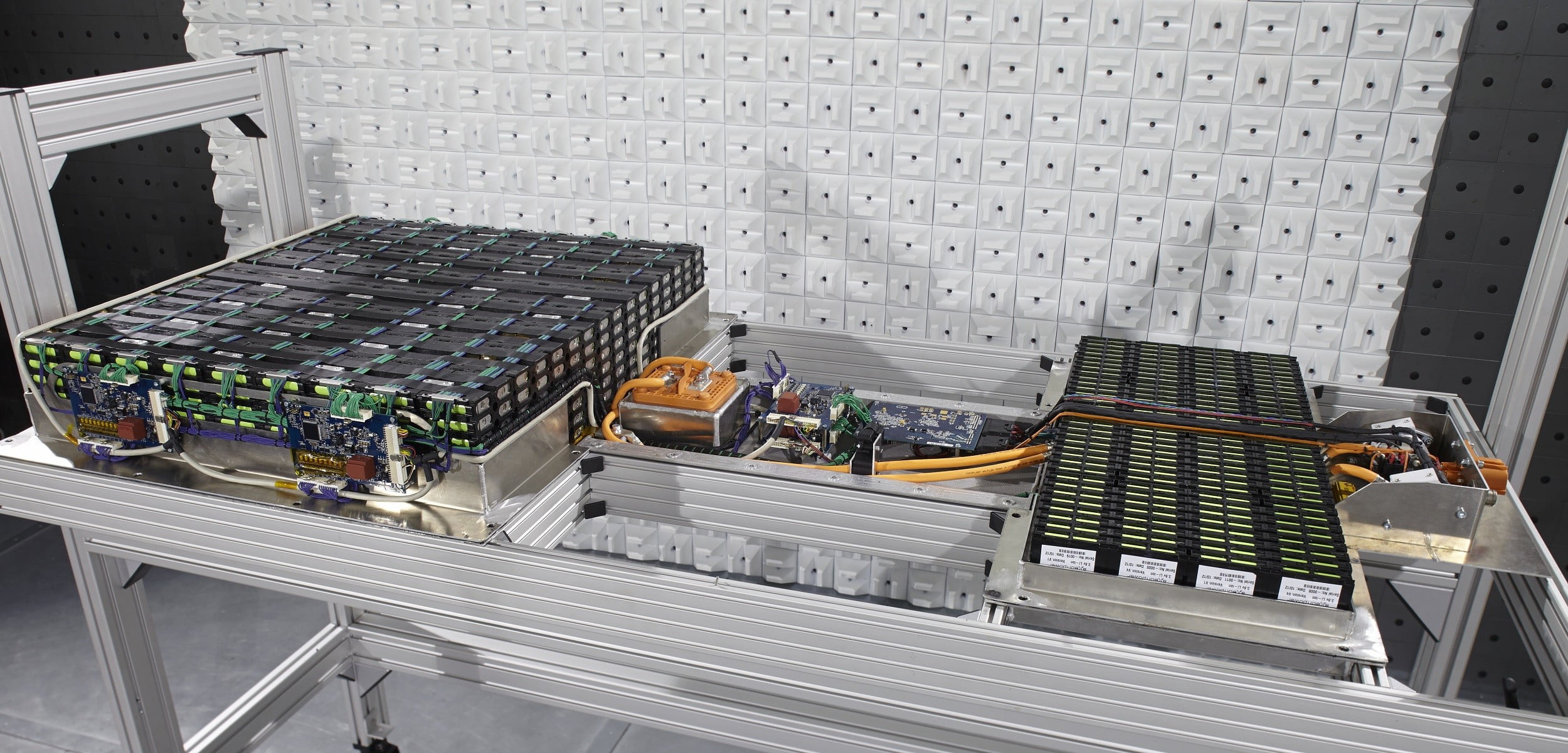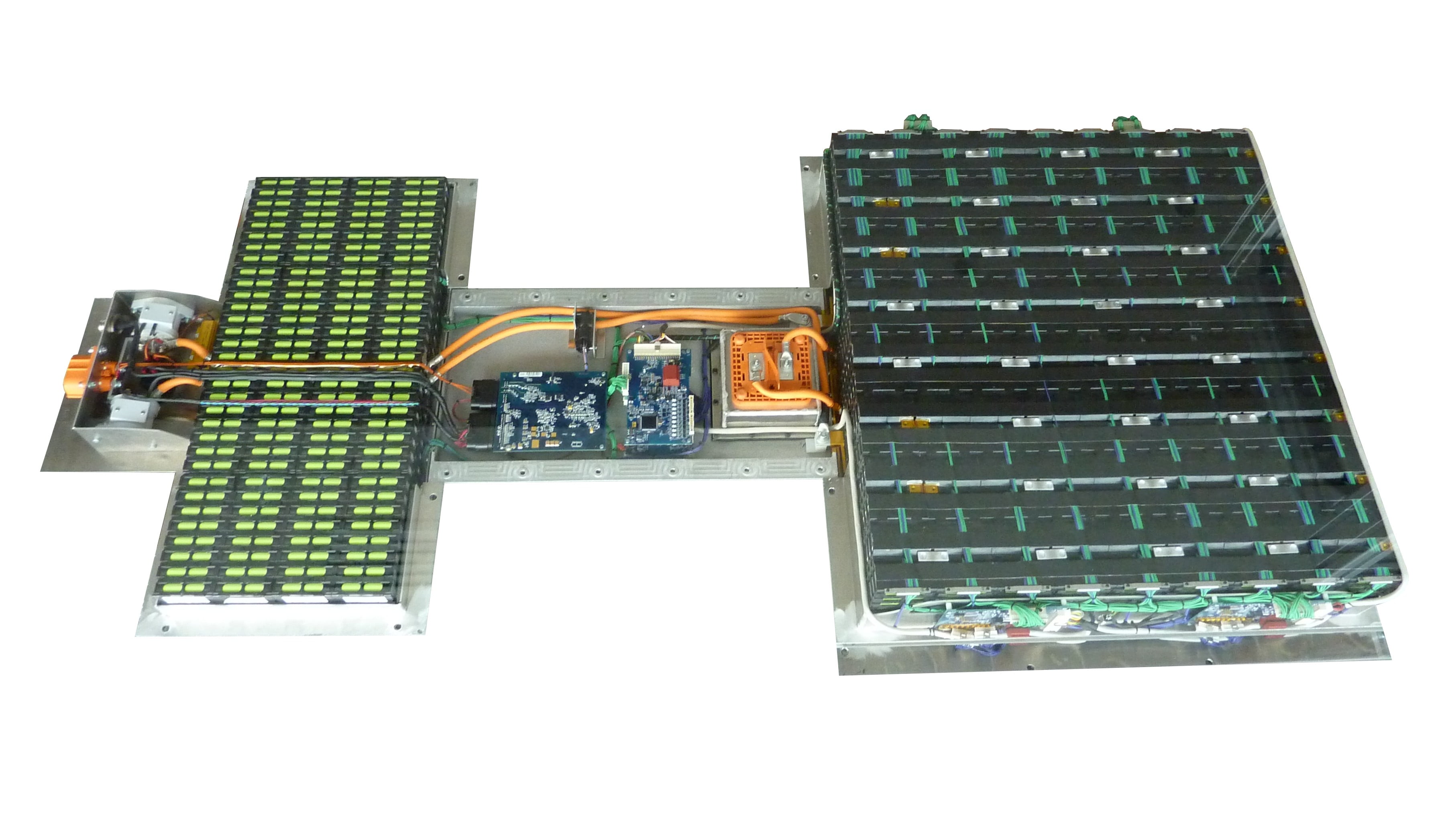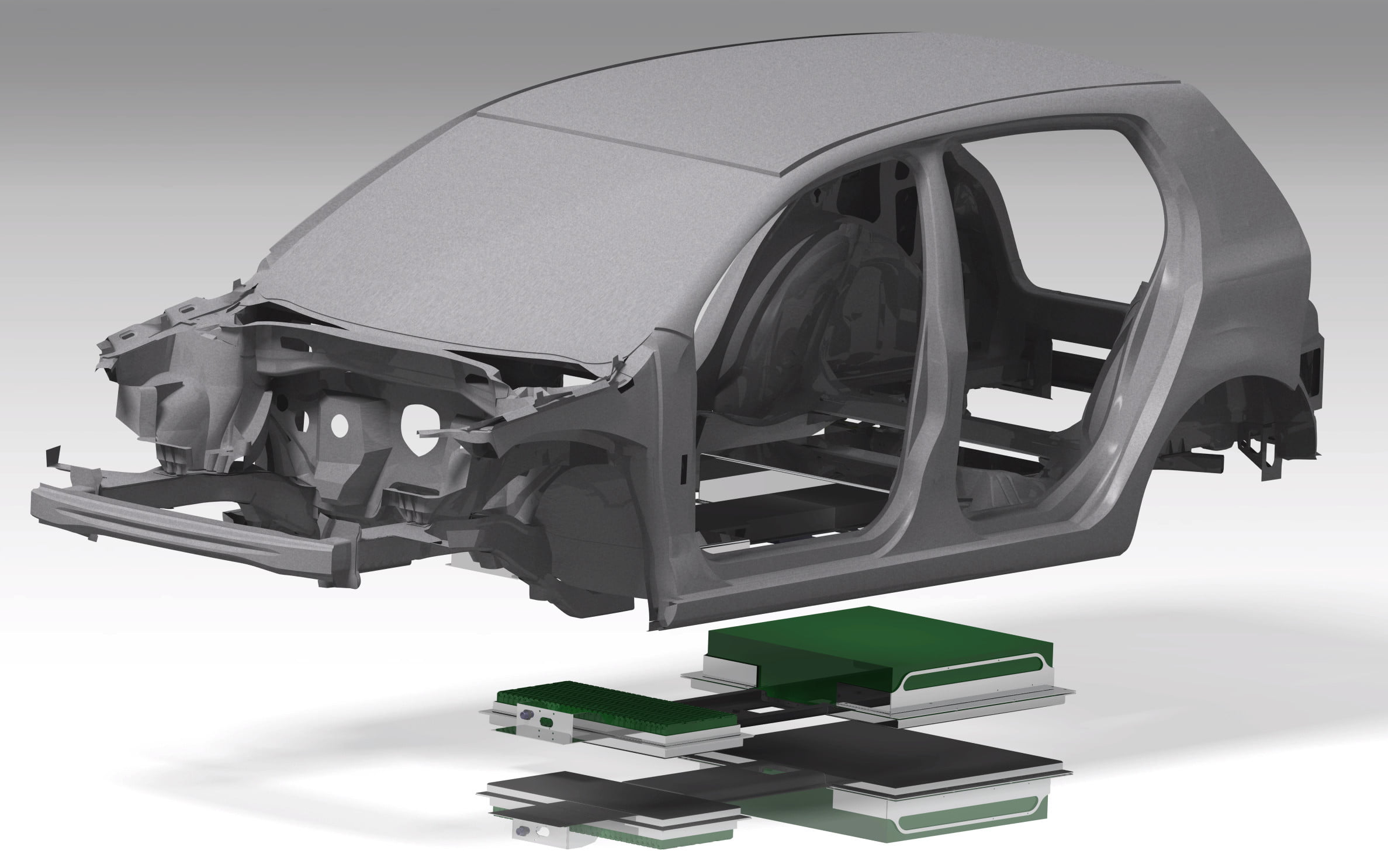SmartBatt – Smart and Safe Integration of Batteries in Electric Vehicles An EU funded project (November/December 2013)

- Website: http://www.smartbatt.eu
The European countries are committed to keep on reducing CO2 emissions and slowing down the climate change. For the individual transport system, the pure electric vehicle technology powered by “green” electricity offers a great chance for an important contribution to the protection of the environment. Resulting from low energy density of batteries and the need to offer a convenient range, the battery packs of the near future will be heavy and bulky (despite the latest advances in Li-Ion cells).
The project context of SmartBatt (full title: “Smart and Safe Integration of Batteries in Electric Vehicles”) was to develop and proof an innovative, multifunctional, light and safe concept of an energy storage system which is integrated in the electric car’s structure. The main challenges of this smart integration were the combination of lightweight design with a high safety level against all kinds of hazards, the optimization of functions and the intelligent design of interfaces to various on-board systems. In order to meet the various challenges, a consortium of 9 companies and institutes from 5 European countries with good reputation was formed capable of viewing on the problem from all important sides and willing to contribute with their knowledge and capacities to the solutions for this specific topic.
- AIT Mobility, Austria
- AIT LKR, Austria
- Axeon (part of the Johnson Matthey group), United Kingdom
- Fraunhofer, Germany
- Impact Design Europe, Poland
- Ricardo, United Kingdom
- SP, Sweden
- TU Graz, Austria
- VOLKSWAGEN, Germany
The expertise of all partners comprises complete vehicle competence, electrics, electronics, batteries, lightweight design, engineering, materials, testing and validation.
The consortium was well balanced: 4 industrial (incl. 2 SMEs) and 5 research partners. The exploitation is not limited to the partners but results are distributed on different ways e.g. project website, papers or trainings as well as face-to-face workshops and meetings with OEMs.
Objectives of the SmartBatt project and partners
The goal of the SmartBatt project was to develop an innovative multi-functional and at the same time safe lightweight construction housing for the battery system of purely electrically operated vehicles of the future. Here the battery case is no longer a separate supplement to be considered for the design of the bodywork but a fully integrated and basic structural component of the vehicle body (e.g. vehicle underbody).
To achieve this goal multidisciplinary domains of engineering sciences (e.g. electrical engineering, chemistry, mechanics, material sciences) have to come to appliance in an interdisciplinary way.
Difference of SmartBatt compared to other battery research programs
In purely electric driven vehicles there is a high claim to energy- and power density of the battery systems. But in foreseeable time battery and cell technology will not be so far advanced that they fulfill the wishes of the OEMs. Thus, the battery system will have the largest proportion in the total vehicle weight.
The SmartBatt project – in contrast to other battery research programs – reduced the overall weight from the battery system by an optimization of the housing structure and through intelligent vehicle integration. The objective was reached through innovative simulation tools and the combination of lightweight construction and new, innovative lightweight materials. A complete “tool chain” was provided for the development of such a lightweight housing that nevertheless has to comply with highest safety standards.
Halving the weight of battery housing
Using an integrative approach and innovative materials it has been made possible to halve the weight of the battery housing and making the battery system as a whole 20 per cent lighter. The use of these innovative lightweight construction materials and the completely new integrative approach required the use of cutting-edge simulation methods and CAD tools in the design process. Extensive crash simulations and laboratory tests carried out in the development and validation phase and showed that the housing is able to absorb any forces acting on the vehicle body in the case of an accident, despite its extremely low weight.
Status
The project was concluded successfully by end of March 2013.
Achievements and results: Highlights
- Complete assembled and fully functional battery SmartBatt prototype available.
- Total weight of 155 kg achieved (goal was 169 kg).
- 23 kWh with a total mass of 155 kg (reduction in housing mass to just 8.5 kg). The ratio between cell and total mass increased to over 80% by use of new materials such as Aluminium hybrid foam sandwich for the battery housing and smart integration.
- Improved energy density of 148 Wh/kg at system level leading to range improvement
- The smart integration in the chassis improves the torsional rigidity, the bending strength and therefore the crash safety of the whole vehicle frame
- The concept is very suitable for mass production, with potential cost savings.



.jpg)

.jpg)


